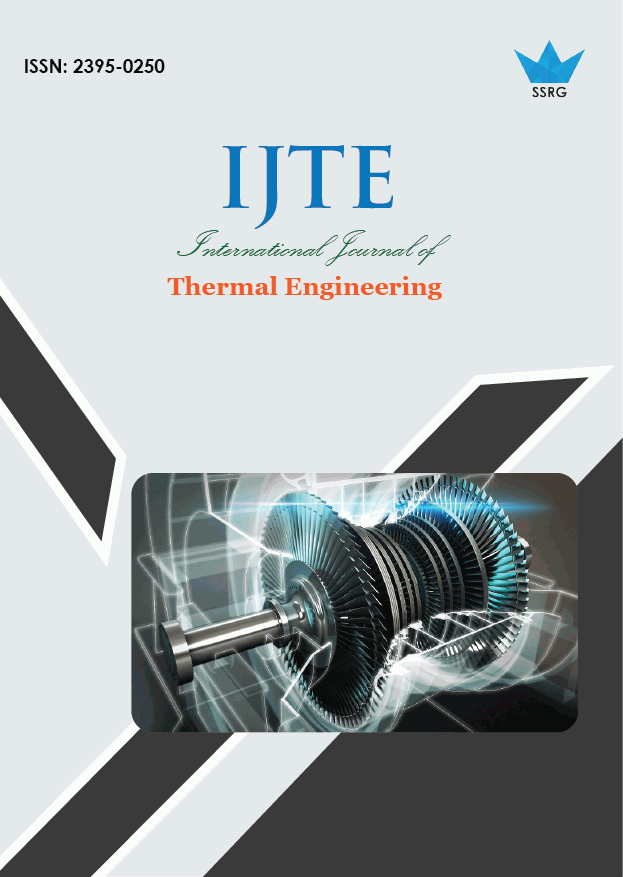Comparative Analysis of Efficiency of Evaporative Air Cooler with Two Different Cooling Pad Material

| International Journal of Thermal Engineering |
| © 2015 by SSRG - IJTE Journal |
| Volume 1 Issue 3 |
| Year of Publication : 2015 |
| Authors : Rakesh Roshan, Upendra parashar |
How to Cite?
Rakesh Roshan, Upendra parashar, "Comparative Analysis of Efficiency of Evaporative Air Cooler with Two Different Cooling Pad Material," SSRG International Journal of Thermal Engineering, vol. 1, no. 3, pp. 18-21, 2015. Crossref, https://doi.org/10.14445/23950250/IJTE-V1I6P101
Abstract:
Air cooler has become a most essential house hold good of all classes of the society. In the summer seasons the temperature shoots 50℃ and above. The existing desert cooler serves the purpose undoubtedly. But it has some demerits. It consumes more water quantity .It becomes ineffective during rainy season when relative humidity have greater values. Maximum part of the water gets wasted. The present research work is an attempt to reduce the water consumption and power consumption in the field of air cooler .In the present work in place of khus a cotton based cooling pad has been used as evaporator. An extra fan has been used to have effective evaporation. In order to understand the physical phenomenon of dessert cooler over the evaporative system, the experimental investigation of cooling system without using pads and save water 70% to 80% depends on atmospheric condition. In this investigation four different temperature were taken. During the experiment an excellent result was noticed. Almost same bypass factor was observed for the half the value of water consumption by the existing desert cooler. Also the present cooler showed the better relativehumidity value than the existingone. Therefore it gives more comfort than the existing one.
Keywords:
cooling pad, Fan, water tank, cooling tower.
References:
[1] Gilani, N. and Shariaty-Niassar, M., 2009, “Aninvestigation of indirect evaporative coolers (IEC) with respect to thermal comfort criteria.” Iranian Journal of Chemical Engineering. 6(2), 14-28.
[2] Srivastava Krishna, DeshmukhDhirajand M.V.Rawlani, 2007, “Experimental analysis coconut coir evaporative cooler” International Journals of Innovative Research in Science Engineering and Technology.3297:2007.
[3] Al-Sulaiman, F., 2002, “Evaluation of the performance of local fibers in evaporative cooling.” Energy Conversion and Management. 43(16), 2267-2273.
[4] Kothare, C. B. and Borkar, N. B., 2011, “ Modified desert cooler (MDC)”. International Journal of Engineering and Technology. 3 (2), 166-172.
[5] Poonia M.P., Bhardwaj A., Upender P., Jethoo A.S.,2011, “ Design and development of energy efficient multi-utility desert cooler.” Universal Journal of Environmental Research and Technology. 1, 39-44.
[6] Khond, V. W., 2011,” Experimental investigation of desert cooler performance using four different cooling pad materials.” American Journal of Scientific and Industrial Research.418-421.
[7] Erens, P. J. and Dreyer, A. A.,1993, “ Modeling of indirect evaporative coolers.” International Journal of Heat and Mass Transfer. 36 (1), 17-26.

 10.14445/23950250/IJTE-V1I6P101
10.14445/23950250/IJTE-V1I6P101